Saw Files
Saw files can also be known as triangular files or three-square files. They often have single cut teeth across the full width of each facet of the file and can come in many different variations including:
- Lengths
- Widths
- Taper
- Fineness (the closer the teeth are on the file, the finer it is)
- Double-cut/ single cut/ second cut
Paul finds that 3 main sizes cover most saws:
- Slim taper
- Extra slim taper
- Double extra slim taper (sometimes shown as XX slim)
When choosing a saw file, it depends on the type of saw, the number of teeth (TPI) and this then governs the size of the teeth. Filing the teeth removes a layer of steel which restores the sharp cutting edge. When sharpening a ripcut saw, the teeth are sharpened to a chisel tip. When sharpening a crosscut saw, the inside of each tooth is sharpened to create two bevels resulting in a three-sided tip point. The saw file can be used for both tooth patterns.
Terminology
Facet- Another word for face
Fleam cut- Another name for ‘crosscut’
Gullett- The ‘V’ shape in between the teeth which the file sits in when sharpening
Types of Saw File
| PPI | Length | Type | Saw |
| 6-7 | 7” | Slim Taper |
|
| 8-11 | 6” | X Slim Taper |
|
| 12-16 | 6” | XX Slim Taper |
|
| 16+ | 5” | XX Slim Taper |
|
If you are struggling to keep the angle consistent when using a saw file, you can use a strip of wood with marked angles on as a guide. If you find you have set your saw too aggressively, you can file them back to an upright position and start again. Ensure you are using the same length stroke, the same hand pressure and the same number of strokes per tooth to get an even pattern.
When buying a saw file it is important to ensure it is tapered and that the width of the file is double the height of the saw teeth. Paul recommends Bahco saw files as they are long lasting and well made. Saw files technically have 6 faces, not 3, this creates a cutting face that reaches into the bottom of the gullet. Each corner is not a point, they are small flat surfaces which have teeth on, this makes the cut more effective. You can buy saw files for less than £10 each and usually can sharpen most saws with a 4”,5” and 6”.
You should never use a saw file without a handle as the tang can puncture the skin if used incorrectly and cause serious hand/arm injury. You can get 2 types of handle, one for a double ended saw file which has slots which allows the file to wedge into the handle, or a handle for a single ended file which is shaped to house the tang. You can get file handles which are made from wood or from plastic, Paul prefers using the wooden handles. You can also make your own saw file handle following Paul’s blog.
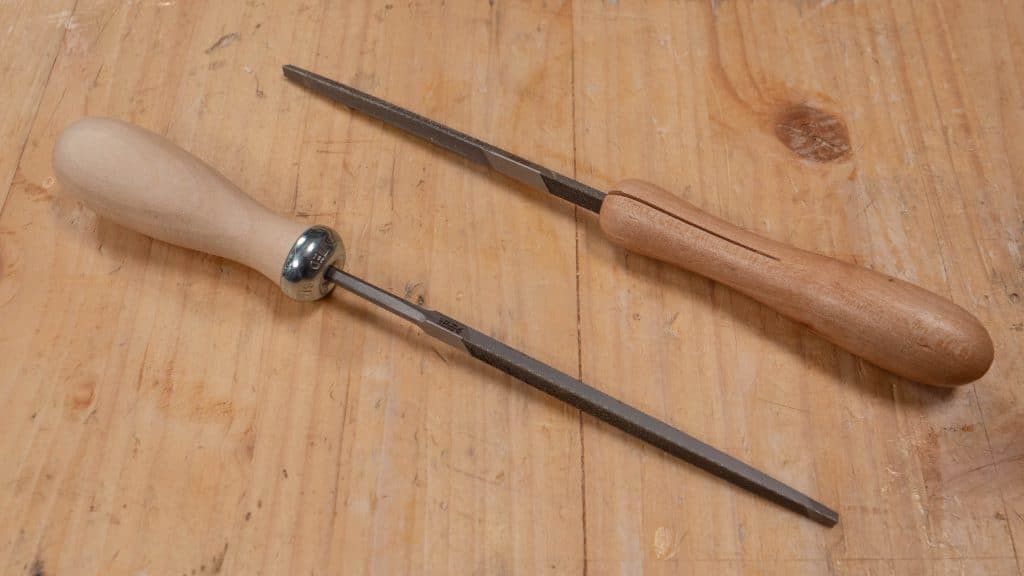
You shouldn’t have to pay more than £3 for a saw file handle, we have purchased this one from eBay for £2.64 free delivery which fits our 4”, 5” and 6” saw files.
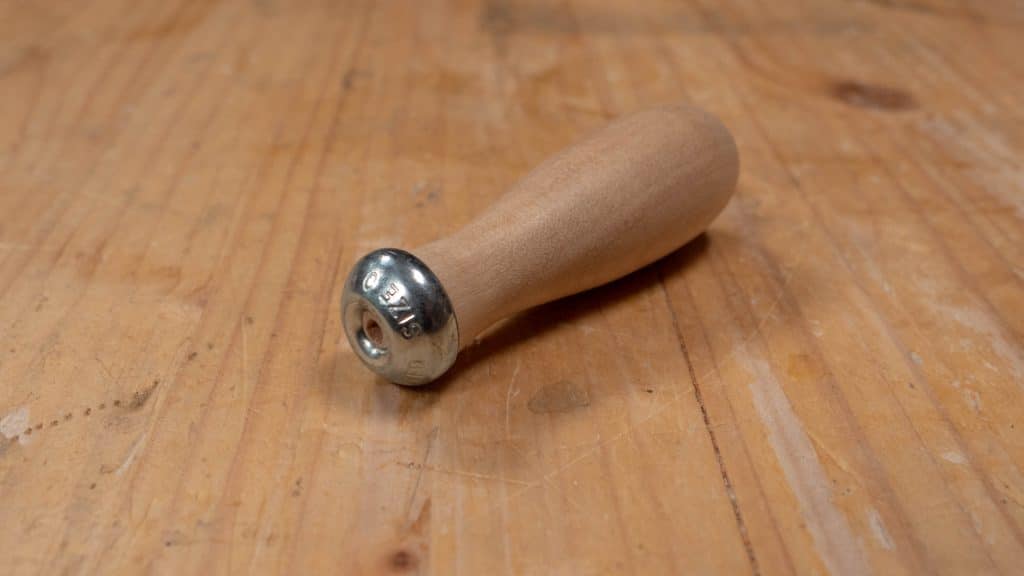
We purchased these Bahco Saw Files from Amazon UK in February 2018 for £5.88 each:
- Bahco Slim Taper Saw File 4″ In our latest price check* the price was £9.60
- Bahco Slim Taper Saw File 5″ In our latest price check* the price was 9.60
- Bahco Slim Taper Saw File 6″ In our latest price check* the price was 12.59
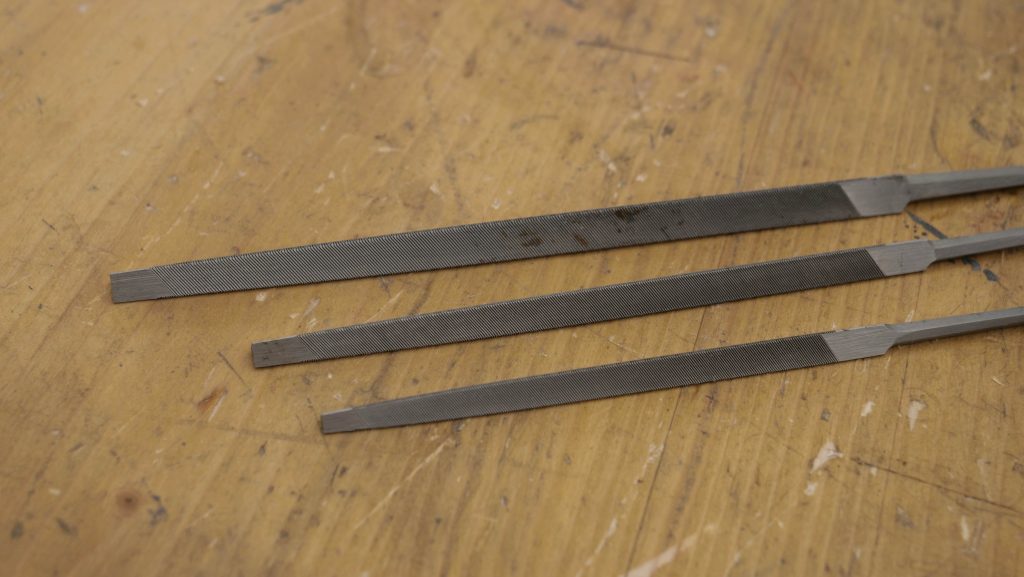
- Prices checked March 2024
Further Reading
To read more on saw files, we recommend the following from Paul’s blog:
Saw Files Saved Edges And Recycling Files
Saw Files Revisited- Bahco Raises The Bar
Bahco Saw Files Beat the Best of the Rest in Real Bench- Testing

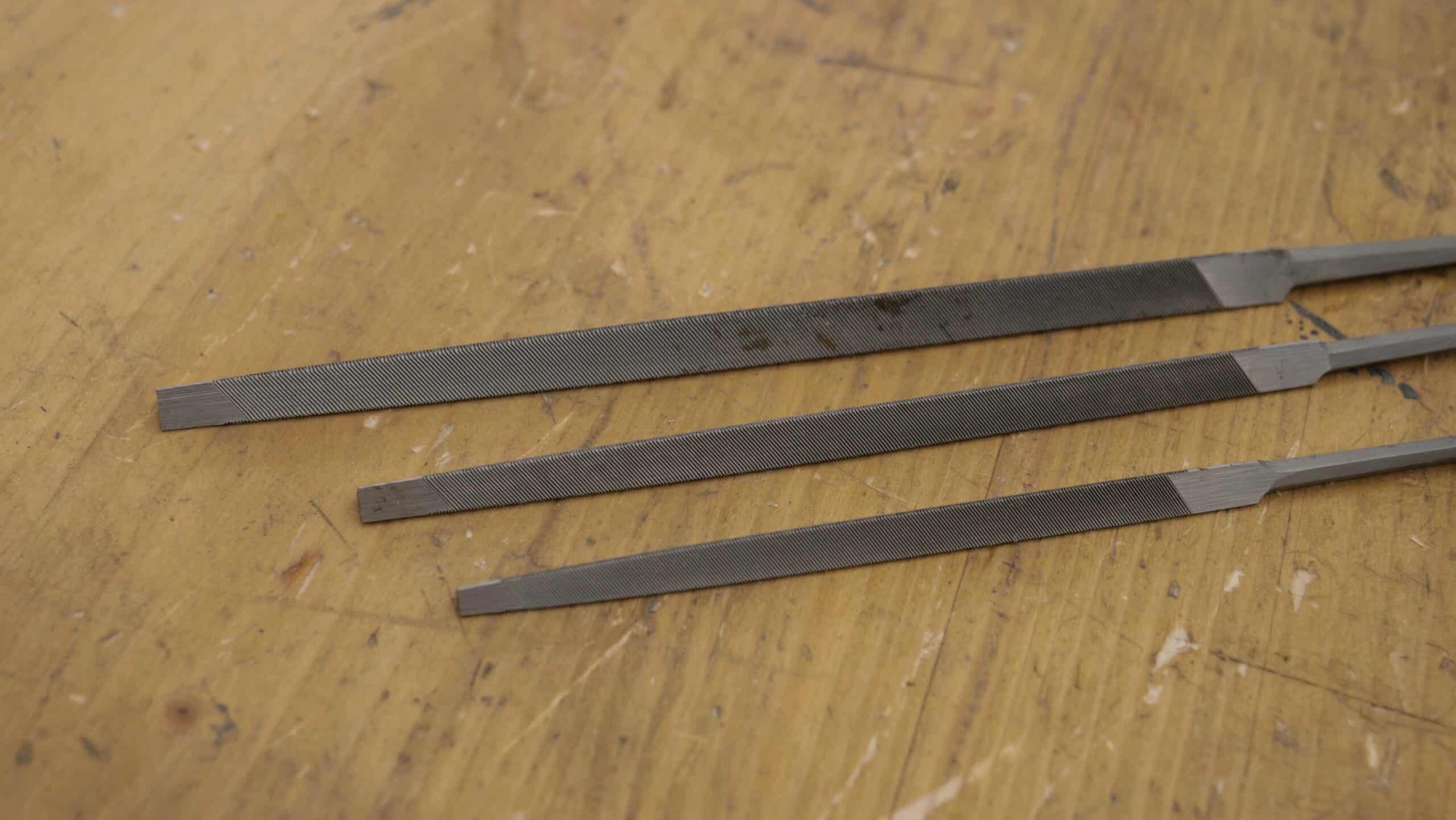
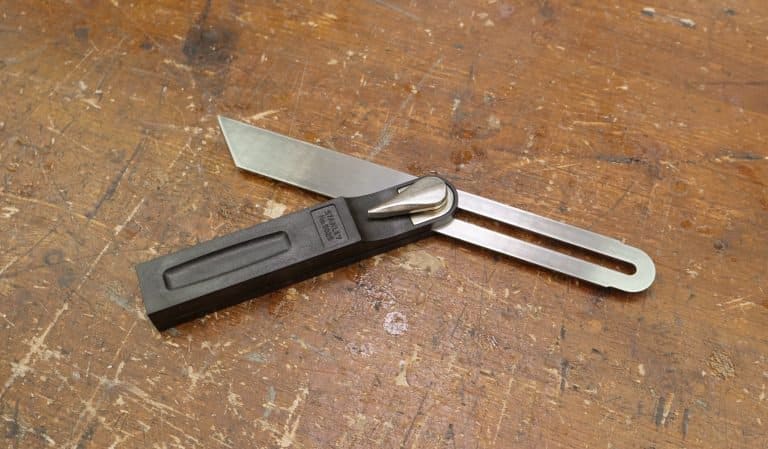
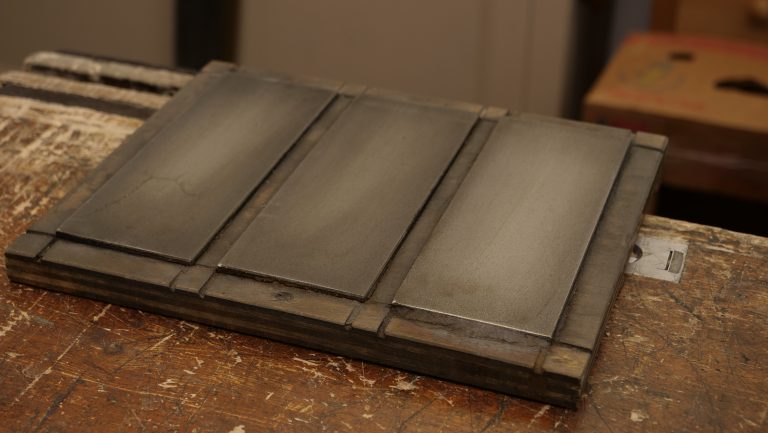
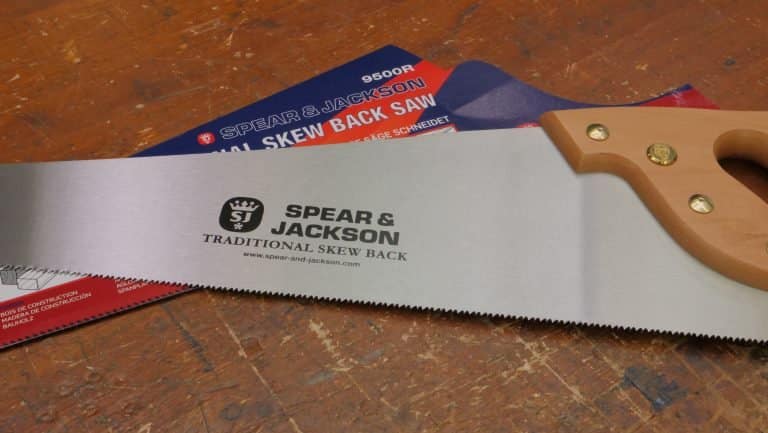
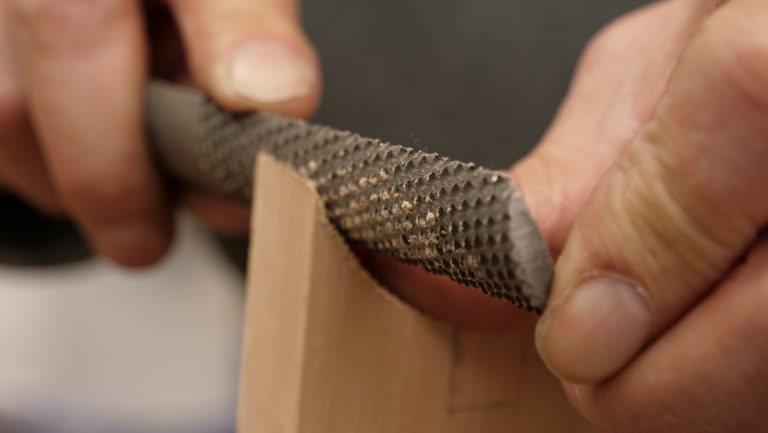
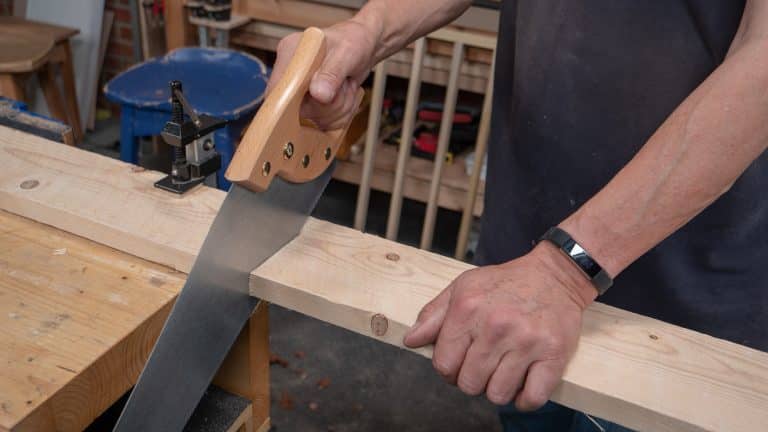
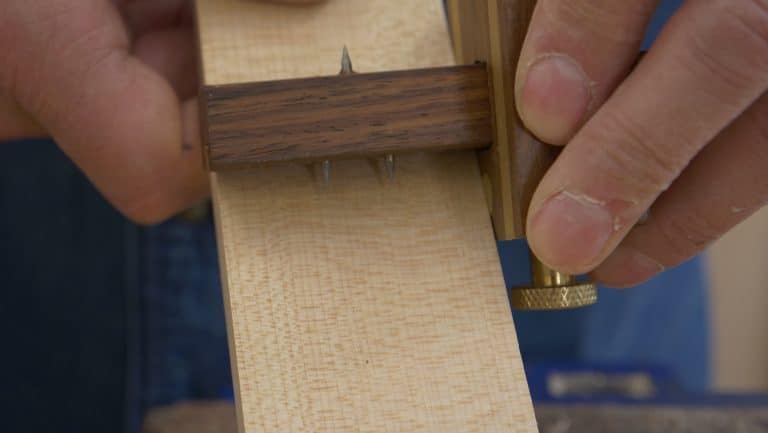
Thanks for defining “Fleam” cut.
Never heard the term before.
Maybe that’s due to my living in the US where we speak a different version of English. 🙄
Hi Mike,
Thanks for the comment.
I’m pleased to hear you’ve found them useful!
Kind regards,
Izzy
In this post, you use tpi (teeth per inch) and ppi (pints per inch) seemingly as synonyms. In my mind they are – if you have 5 teeth you have 5 points.
Do they indicate the same or is there a difference? There’s a lot of discussion on the net about it but its all based on opinions..
Mic
Hi Mic,
I passed on your query to Paul and he said:
If you have 5 teeth you have 4 points, however, 4 and 5 are used relatively as there is such little difference. You can use TPI and PPI interchangeably without worrying about the nomenclature .
Kind Regards,
Izzy
Paul:
I’m a bit confused… Could you update this Posting to reflect USA and EU Files buying sources? Do I want Slim Taper for all three sizes (4″, 5″, 6′), or should they be different in some way(s). I can’t seem to find Bahco Slim Taper files in all the sizes mentioned, except for “Second” (Cut???)?
Any suggestions for ordering these files from UK and shipping to USA? Finally on the last bit of shopping for my Tool Kit! Looking forward to working some wood in the coming weeks.
Cheers,
Jon in MA
Hi Jon,
Thank you for your question, I passed it on to Paul and his answer is below:
All of the UK catalog companies carry a good range of files, the only ones that need to be slim taper would be 4” & 5”.
Kind Regards,
Izzy
Hello,
Does Paul have a video on how to make to the file jigs to help with the file angle during sharpening?
Thanks,
Landon
Hi!
Could you tell me which file should I use for a 13 tpi tenon saw?
Here you suggest 4-188-06-2-0, which at Workshopheaven is suggested for a lower (10-11) tooth count, and they suggest 4-188-05-2-0, which you suggest for a higher (16+) tooth count.
Personally, I would go for the longer one for the longer stroke, but it is currently unavaliable.
Hi,
Paul says:
The only way to size a saw file is not by the numerical number of a manufacturer but by ensuring that the saw file itself is slightly wider than the gullet depth. The reason we do this is when you rotate the file, the teeth on both adjacent faces of the file will wear evenly. For the main part tool suppliers choose a variety of saw files according to the manufacturer that they sell the tools on behalf of. I usually use only two saw file sizes.
Kind Regards,
Izzy
Dear Paul,
Would you kindly explain the meanings of differences between files classified as “Double-cut/ single cut/ second cut”?
Thank you
Peter